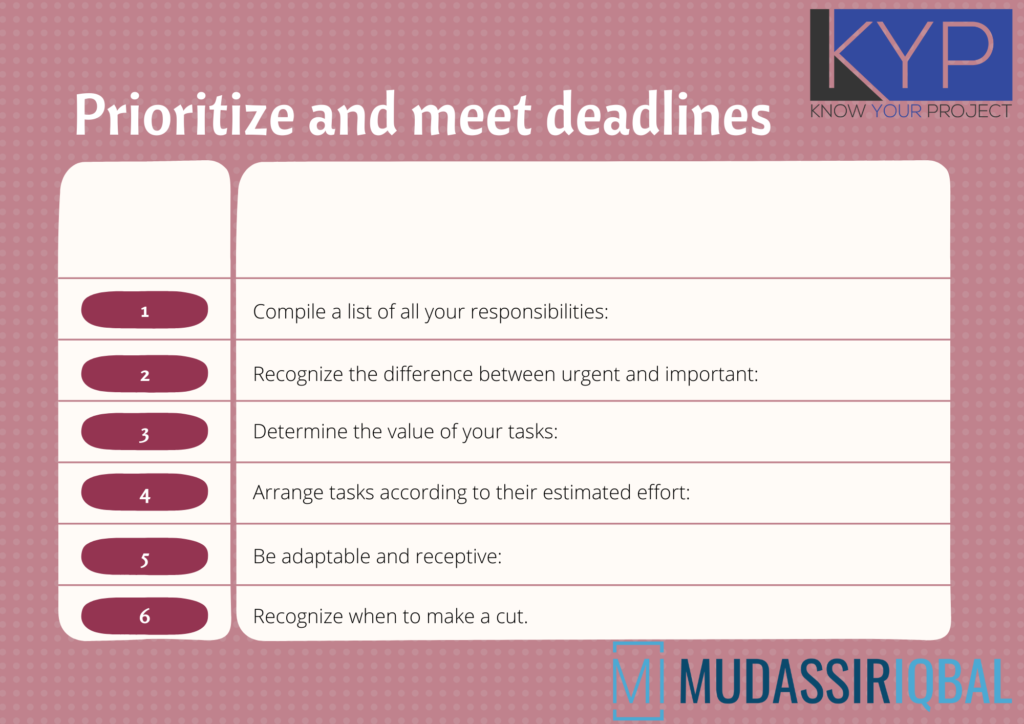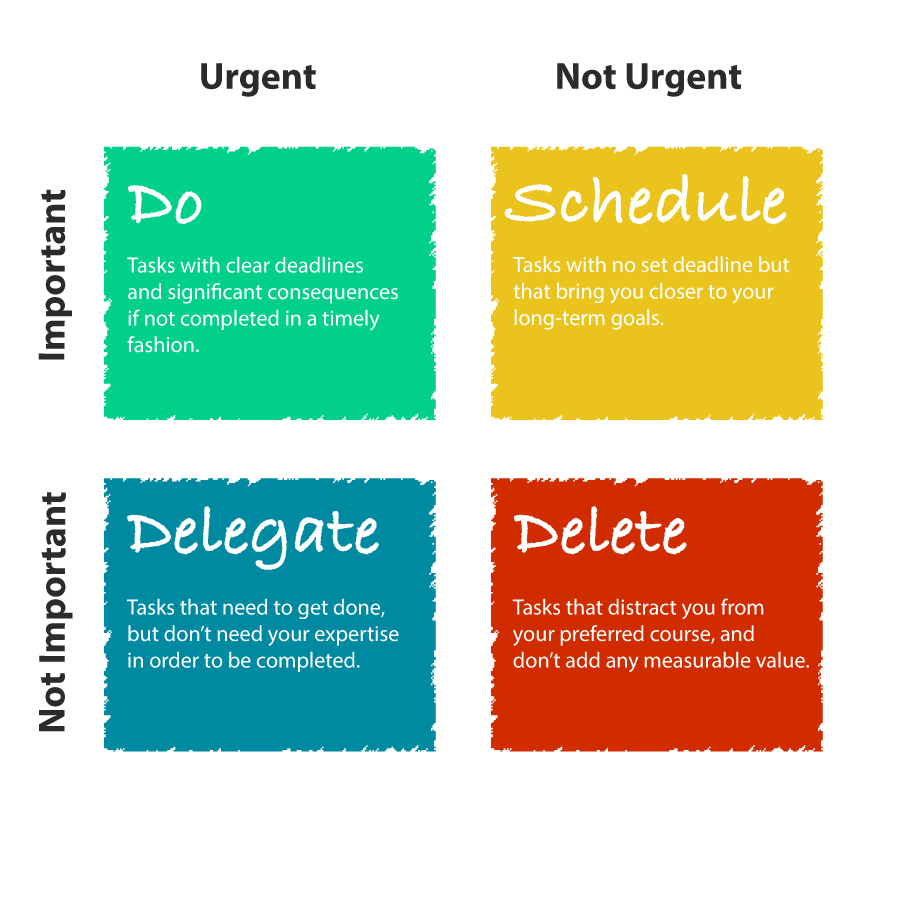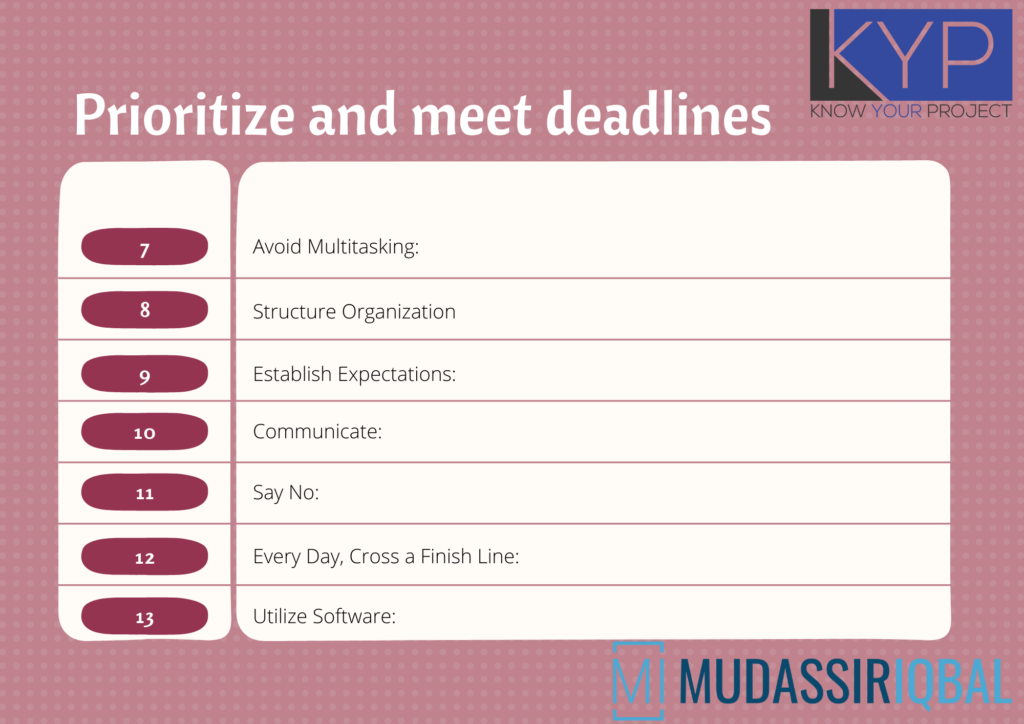How often have you sat at your desk and realised you’re at a loss for where to begin? Alternatively, when was the last time you felt as if you were drowning in tasks and unsure how to stay afloat? Here we will be talking about how to prioritize and meet deadlines.
The average employee is interrupted more than 28 times per day, according to studies. When our workdays are crammed with so many competing priorities, it’s difficult to know where to begin.
Getting your priorities straight is critical to career success—but it’s easier said than done. So how do you begin?
When people inquire about how I manage my time so effectively, they frequently assume I’m a huge proponent of tedious to-do lists and scheduling.
In reality, neither of them has ever been a favourite of mine. My approach to prioritize and meet deadlines is more focused on the big picture than on the details. Having said that, there are a few things you can do to maintain control of your workload.
To begin, you must distinguish between what is urgent and what is important. Once you’ve mastered that, these 13 steps will assist you in prioritising your workload so that you can remain productive without jeopardising your mental health or missing deadlines.
1. Compile a list of all your responsibilities:

Keep track of everything you need to accomplish in one location; whether that is your email inbox, Google calendar, or notebook, the choice is yours. The trick is to have a central location where you can view all open tasks simultaneously.
2. Recognize the difference between urgent and important:
Recognizing this distinction is critical when it comes to prioritising projects and tasks. The Eisenhower Method assists in distinguishing between urgent and significant tasks by categorising them into four quadrants:

3. Determine the value of your tasks:
You can figure this out by looking at how much time it will take you to complete them and how much money (or other quantifiable benefits) you can expect to gain from their successful completion.
4. Arrange tasks according to their estimated effort:
Sort through your to-do list and decide which items require your immediate attention and which ones are more time-sensitive.
5. Be adaptable and receptive:
Everything goes wrong at times, so ensure that you have the flexibility to alter your course as necessary. If something does not work, adapt and try another!
6. Recognize when to make a cut.
If something becomes more critical or urgent than another task, do not hesitate to set the less critical task aside for the time being.
7. Avoid Multitasking:
Multitasking is a myth, but when done correctly, it can make you feel like a superhero. In reality, multitasking is a self-created illusion designed to make us feel as though we are accomplishing more work. I personally don’t. I switch tasks when either I am stuck and I want to give my mind some relaxation time by doing some other task.
8. Structure Organization:
With a dated calendar and an out-of-date to-do list, how can you possibly have a productive day at work? Even worse, how can you expect your team to prioritise if they don’t know where they’re going??

When juggling multiple projects, a well-structured organisation is essential.
9. Establish Expectations:
If you require assistance from another person, it’s always a good idea to ensure they understand what you require—and by when you require it—before they begin. This way, they can ensure that their work fits within your deadline schedule or notify you if they are unable to complete the task on time. This helps you avoid unpleasant surprises or unexpected stress at the last minute!
10. Communicate:
Communication is a problem in a large number, if not the majority, of organisations. Managers must communicate deadlines and priorities to their teams, and employees must communicate roadblocks and obstacles to their managers. Without effective communication, it becomes significantly more difficult for individuals to prioritise their responsibilities and adhere to deadlines.
11. Say No:
It’s natural to want to assist your team when they request assistance. However, sometimes saying “yes” means taking on more than you can handle and falling behind on other projects, which can have a negative effect on the quality of your work in the long run—and aggravate you in the short term! Bear in mind that it is acceptable to say no on occasion! It may be challenging at first,
12. Every Day, Cross a Finish Line:
There is no greater sense of accomplishment than completing a task on your to-do list. Keeping a steady pace and concentrating on completing your work can give you an incredible amount of momentum.
13. Utilize Software:
There are so many fantastic tools available to assist people in managing their time, setting goals, and completing tasks efficiently!
Conclusion:
and I’d like to conclude by saying, when planning your schedule, keep in mind any additional responsibilities you may have, such as meetings or family events. These factors will affect the amount of time available for work tasks.

